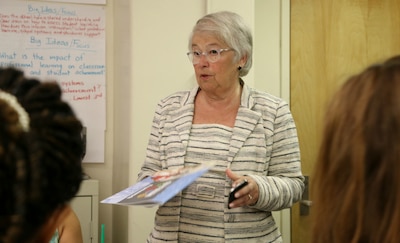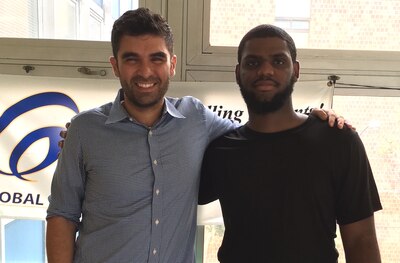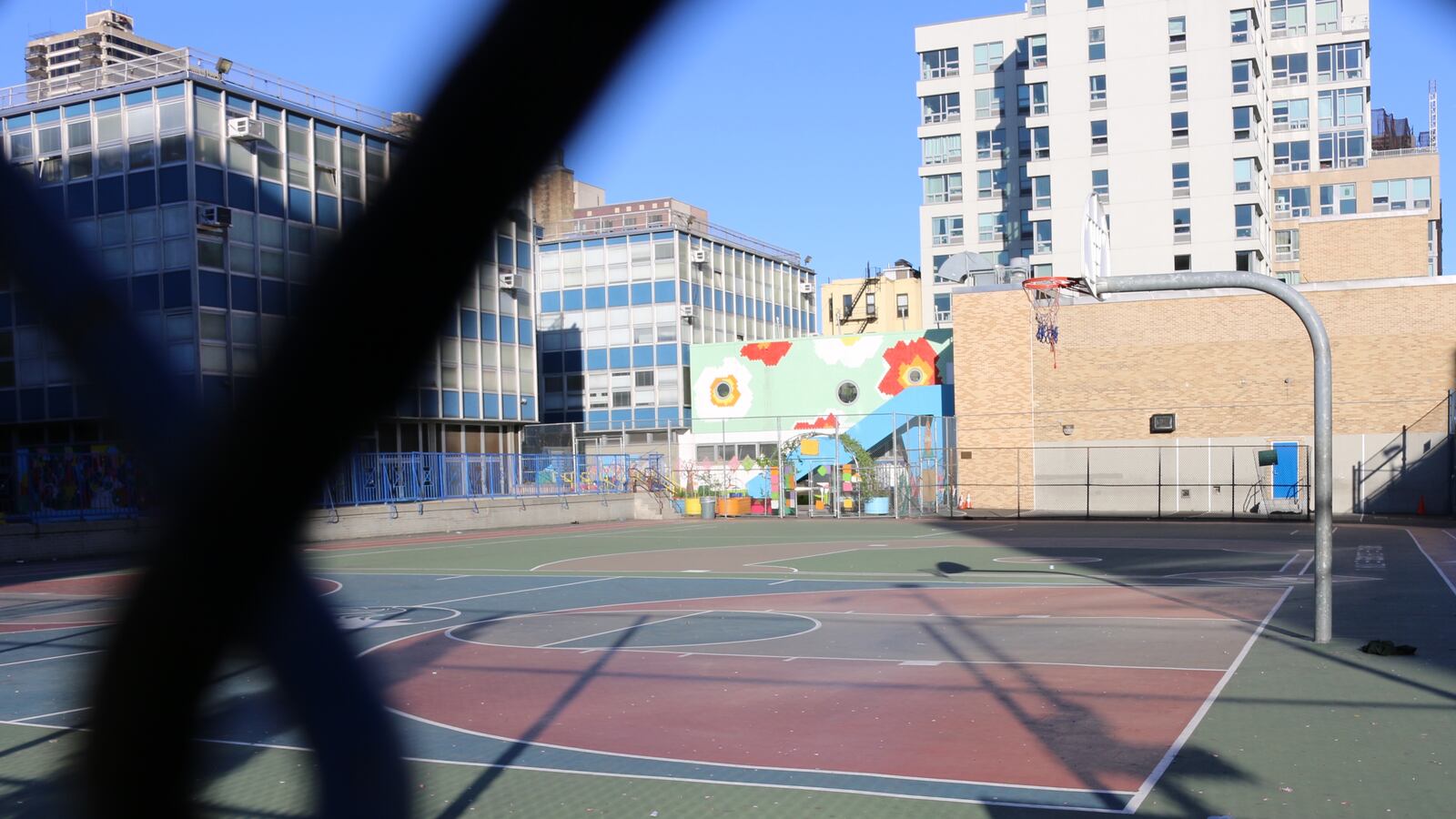David Baiz was disheartened.
He had turned in his annual comprehensive plan on how to improve the middle school where he was principal, Global Technology Preparatory in East Harlem. Now, New York City education department officials had reviewed the plan and offered feedback.
Baiz opened the officials’ comments expecting substantive suggestions about how to help his students, who faced many challenges. That’s not what he found.
“Some of their feedback is, like, ‘Misspelled this,’ ‘Space this out,’” Baiz said. “If it’s a formatting issue, a grammatical issue, why are we going through this feedback process?”
Baiz sees the experience as part of a pattern of micromanagement and misplaced priorities by education department officials since he became principal in 2013, the same year that Bill de Blasio was elected mayor and began reshaping the school system to align to his own vision.
Baiz isn’t the only principal to chafe under the de Blasio administration. While principals’ opinion of Chancellor Carmen Fariña started high, their satisfaction with her handling of school oversight has dropped by 10 points on a city survey since 2014. In more than a dozen interviews, principals told Chalkbeat that while the administration had brought some welcome changes to the city’s schools, it has also ramped up its scrutiny of their daily decisions and made it harder to get some of the help they need.
Part of Fariña’s goal in trying to rein in a disjointed system was to make it tougher for struggling principals to slip through the cracks. But for some principals, the shift to centralized decision-making — with newly empowered superintendents playing a leading role — has had unintended consequences.
When Baiz wanted to tap department resources to help him improve teaching and learning at his school, he said he was told he had to run the request by his superintendent. And his superintendent vetoed his plan to hire an assistant principal — even though he had the money and a person picked for the job. (The city did not dispute Baiz’s account.)
The result: He had less time in the classroom to help students and coach teachers, he said.
“I really could have used the support, I would have really appreciated it, and I was told no,” Baiz said. “I felt powerless. And I feel like there was no recourse for me.”
"When there were no mandates whatsoever and everybody did whatever they wanted, it got to a lot more inequity."
Chancellor Carmen Fariña
Until recently, powerlessness would have been an unfamiliar feeling for many New York City principals. Many of them came on board under Mayor Michael Bloomberg, who served three terms as mayor and, along with his longest-serving schools chief, espoused a radical new doctrine ripped from the business world: that principals should be treated as the CEOs of their schools.
At a recent NYC Leadership Academy event, former Chancellor Joel Klein explained his vision for elevating principals.
“That’s the way you change a system: Get great leadership, hold them accountable but empower them,” he said. “Don’t try to micromanage them. Don’t try to control them. Let them do their work, and let them rise to greatness. I saw that time and again.”
Eric Nadelstern, the Klein deputy who designed the autonomy zone, explains that it reversed the typical paradigm in which principals are subservient to superintendents in running their schools.
“In almost every school district in the country, you’ve got a kind of command-and-control paramilitary structure,” Nadelstern said. “And here, we tried to come up with a structure where the school was at the top of the pyramid.”
The city began testing the theory in 2004 in a small-scale “autonomy zone” that soon expanded into a citywide approach. Principals would receive more control over hiring, budgets, and curriculum, and in return, would be judged based on student achievement. If they didn’t measure up, they could be fired. Eventually, the city created a system of “networks” which principals could opt into, that would support schools with instruction and operations, including payroll, human resources and transportation.
That structure held the most promise when schools were in good shape, with strong and responsible leaders, and the Bloomberg administration worked to ensure that was the case as often as possible. But over time, evidence mounted that weak oversight combined with a rigid accountability system could be a dangerous mix for weaker principals in struggling schools — of which there are many.
“Some principals, particularly new and inexperienced ones, are floundering without adequate direction and support,” a 2010 report by the Center for New York City Affairs concluded.
“Sometimes inexperienced people may make bad choices,” Kathleen Cashin, a former superintendent in New York City who now sits on the Board of Regents, New York State’s education policy body, told Chalkbeat. “We need to have checks and balances on power, especially when we’re dealing with children.”
Fariña was skeptical of the autonomy zone from the start. (Nadelstern said their disagreement over principal autonomy was one reason Fariña left the Department of Education in 2006. The department did not comment on that assertion.)
When de Blasio plucked her from retirement to run the school system, Fariña immediately said she would explore flipping the power structure back, to put more authority in the hands of superintendents.
“I think having the person who evaluates you be the person who supports you is very important, and that’s really what the superintendents will be doing,” Fariña said in 2014.
Soon after, Fariña announced she would dissolve the roughly 55 networks and replaced them with seven centralized “field support centers,” staffed with many of the same people, while reestablishing the superintendent as the principal’s main point of contact. Superintendents — whom Fariña required to have at least three years as a principal — would be her “eyes and ears,” she said. (Some of the networks run by nonprofits, such as New Visions for Public Schools, would continue to give resources and guidance to schools and are now called affinity groups.)
That meant superintendents would have a greater role in the daily lives of principals — to shape instruction, ensure that principals follow the rules, and maintain consistency across the system.
“When there were no mandates whatsoever and everybody did whatever they wanted, it got to a lot more inequity,” Fariña told Chalkbeat.

But consistency and oversight come at a cost — to principals and their students.
Weekly chancellor emails sent to principals and filled with compliance items, like letters to send home with students and reminders about emergency trainings, are longer than before, principals say. And there is more follow-up, they say. The feelings seem more acute among middle and high school principals whose schools were a larger focus of Bloomberg’s efforts.
“The reality is that under Bloomberg you would click submit [on a required document], and you would never hear back,” said one principal. “Now we hear back three times with revisions being required over and over and over.” (Many principals interviewed for this story declined to comment on the record since they felt doing so could put their jobs in jeopardy.)
Too often, principals said, the administration has them fending off audits, attending meetings that aren’t necessarily relevant to their schools, and generally contending with bureaucracy. One principal told us, for example, that officials have asked multiple times for details about where Respect for All anti-bullying posters hang in a school.
Another said those kinds of tasks result in time away from students. “It certainly results in principals spending a lot more time at their desk responding to emails from central administrators and less time in the classroom,” said an administrator from Queens who spoke on the condition of anonymity.
Brady Smith, principal at the James Baldwin School in Manhattan, said that at the start of the restructuring, he spent important hours readying his school for inspection on a range of topics, from academic integrity to how schools enroll students. He says he has come to appreciate the importance of regulations, like ones that govern how to award credits correctly. But there are tradeoffs, Smith said.
“When you’re in an office preparing for an audit, you’re not in a classroom,” said Smith, who said he’s now spending less time on audits.
Some observers say applying that level of scrutiny to all aspects of running a school can stifle innovation.
“If you give people the opportunity to color outside the lines, that’s when you’re going to innovate,” said Andrea Gabor, a journalist who is writing a book on the future of education reform and wrote about Baiz. “You’re either moving forward or you’re moving backward.”
As an example, one principal pointed to the city’s summer school curriculum. Previously, schools and networks were on their own to decide what students would learn over the summer. Now, principals must use the city’s curriculum or request permission to opt out.
The principal decided not to apply for the right to use an in-house curriculum because of the hassle involved.
“There’s like eight extra layers of paperwork,” said the principal. “There just seems to be a complicated, centrally run program for everything.”

Education department officials said principals who dislike the system are out of the norm — and pointed to a city survey showing that principals generally give their superintendents high marks. (That’s the same survey, however, that shows their satisfaction with the chancellor has decreased.)
“By any measure, our superintendents are driving the system forward, in partnership with FSCs [field support centers],” said Senior Deputy Chancellor Dorita Gibson. “Test scores and graduation rates are going up across the city, there are strong approval ratings on the Principal Satisfaction Survey, and our principals can speak to exactly how their superintendents are helping them improve instruction and student achievement.”
Officials also dispute the idea that they exert excessive control over what happens in schools, pointing to the fact that schools’ use of centrally chosen curriculum dropped in the last four years. They also point to the PROSE program, which allows some schools to bend city or union rules to try a more creative approach.
Fariña defended her style in an interview with Chalkbeat, arguing that she understands principals because she was one herself. She said she offers advice primarily to help, not to force principals to change their leadership style.
“I’ve had the years [of] experience. I share it,” Fariña said. “It doesn’t mean you have to do it. But look, these are some of the things I’ve learned. Feel free to take what you need from it.”
***
In Fariña’s view, putting superintendents back in the driver’s seat is key to ensuring that schools make the changes they need to improve. Danielle DiMango, superintendent of District 25 in Queens, said she spends more time now than under Bloomberg visiting schools in her district and schools are benefitting from her presence.
She helps principals think through their goals, reviews their curriculum and instruction, and provides honest feedback. If she sees something a principal needs to improve, she tries to offer resources and alternative ideas.
"With Bloomberg, it was like running a hamburger joint, but it was my own hamburger joint. And with de Blasio, I’m running a McDonald’s and I have to serve the Big Mac."
Ari Hoogenboom
Her expanded role allows her to influence principals throughout the year, instead of simply swooping in at the end of the year to evaluate them, she said.
“I’m not just speaking to principals about, ‘These are the things we have to do,’” DiMango said. “It’s really about how we make changes in our schools.”
That is working for some principals. Two years ago, Reginald Higgins, principal of P.S. 125 in Upper Manhattan, decided he wanted to take a school that was once on the verge of closure and infuse it with a focus on learning through play.
Throughout the process, he said he received support from his superintendent, who works in his building, he said. Importantly, his superintendent understood his school community, Higgins said, which was a key goal behind Fariña’s decision to dissolve the disparate networks and organize the new system around geography.
“My network leader was from the Bronx [and] didn’t really understand the unique challenges of what our school had to deal with,” Higgins said.
Yet some aspects of the support system appear to be working against superintendents like DiMango and principals like Higgins.
When Fariña re-empowered superintendents, she did not fully rebuild the staffing structure in superintendent’s offices that existed in the pre-Bloomberg days — and had drawn criticism for being a bloated bureaucracy. As a result, some say superintendents have more authority, but they can’t always provide the support needed to make good use of their ideas.
“The superintendents have the responsibility and, on paper, they have the authority to make things happen,“ said Clara Hemphill, editor of the school-review website Insideschools. “But they really don’t have the staff or the budget to do much. That’s a complaint I hear very consistently.”
That could leave superintendents unable to respond to schools’ individual needs, principals say.
“It doesn’t feel like the superintendent makes an effort to see what’s working in the school and understand what’s working in the school,” said a Brooklyn principal who asked to remain anonymous. “It more seems like they come in with an agenda of ‘We want to see X, Y, and Z.’”
Compounding the matter, the field support centers, which are supposed to provide that extra support on operational and instructional issues, are not technically under the control of the superintendents.
“By and large, superintendents feel they need to have those resources under their control,” said outgoing principals union president Ernest Logan. “If I go to my superintendent and I say I still need additional resources to do something, there’s nobody who can get that for them. Principals believe it’s haphazard.”
The field support centers are also in charge of larger swath of schools. Whereas the networks had 18 to 35 schools each, the centers serve anywhere from 69 to 323.
Shannon Waite, who used to work in human resources at a network, said the networks were small enough that she could go visit schools that were experiencing problems.
“I didn’t have 200 schools so I didn’t have to be chained to my desk,” Waite said.
On the ground in schools, that shift can feel like a barrage of emails and a lack of support.
“The network would send people out to help you with SESIS,” said the Queens administrator, referring to the city’s troubled special education data system. “Now, the go-to is to forward an email and tell you what to do.”
Ari Hoogenboom, principal of Abraham Lincoln High School, spelled out the pros and cons. Fariña’s system is likely to minimize wayward principals from breaking the rules or getting in over their heads. But in the long run, it might also discourage stronger principals from taking risks that could help students.
“With Bloomberg, it was like running a hamburger joint, but it was my own hamburger joint,” Hoogenboom said. “And with de Blasio, I’m running a McDonald’s and I have to serve the Big Mac.”

